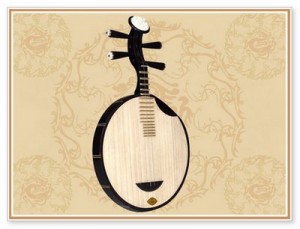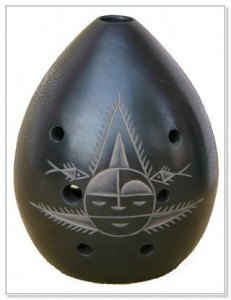Since the Qin Dynasty, 221BC, has 2000 years of history. The carillon first had made of bronze, the most prosperous and bronzes of the Shang and Zhou dynasties, the carillon can be said that one of China’s earliest musical instrument! While the clock is not just as a carillon is also a national integrity as well as a status symbol.

Note the difference between clock time as a musical instrument or a separate entity there are manufacturing material difference.
The history of the bell
The origin of the clock in a variety of ways, initially as earthenware.
The origin of the “bell” when existing historical records vary. “Shan Hai Jing at home and by said:” the Yandi Sunbo Qi Health drums, is the beginning of a bell “. “Spring and Autumn Annals. Midsummer Ji said:” the past Yellow Emperor Ling-Ling Lun as law. …… The Huangdi life Ling Lun Wing will cast 12 minutes, … “” Pipe five types articles “:” Formerly, of Huangdi its priorities for the five sound, make it five minutes, said a green bell sound political bell; second is red bell center of gravity; third is yellow bell sprinkle light; ignorant of its Si Yue Jing Zhong Ming; Rider Black clock hidden it often. ” Well as the legendary Yao and Shun, a person called vertical record, of course, some scholars believe that the clock is originated in the bells.
The first bell is ceramic in Shan County Miaodigou, Henan unearthed a new era period Tao Zhong, about 9 cm, diameter 5 cm, resonance cylindrical body is cylindrical, the top short handle.
Yu period, a bronze bell. 16th century BC to the 11th century BC Shang Dynasty, China will have a different shape of the bell, from ancient bronze shape several bell unearthed instrument, has been able to see.
In the Zhou dynasty, bell classification of ancient musical instruments, living first in the octave instrument for the gold class. Bell instruments used in the ceremony and banquet held in the ancient ancestral temple or palace. Chronicles for Gagaku. Now only as a heritage retention, has an important historical value and high artistic value.
The clock since the Qin and Han dynasties.
The bells in the Shang Dynasty, the rise in the Western Zhou Dynasty, flourished in the Warring States Period.
In February 1976, in the the unearthed from the Qin Shi Huang mound about 100 meters north-west of at the a the wrong the gold and silver button bell, bronze production,-bell New Zealand one side of engraved with the the word “the Poem” The, indicating that the the Yuefu institutions is in the Qin Dynasty had already established a. In Yuefu bell of Qin Dynasty craft is exquisite and and meticulous, the sound clear and melodious, the pitch for the C. Qin and Han dynasties affected by the war, bell cast craftsmen and musicians scattered death, the bell cast technology has repeatedly lost during that time.
The ancient bell divided into special bells and chimes, special bell, also known as Bo Bell, separate hanged on the gallows, each with only one, bells by the number of pieces of different sizes bell hung on the same gallows.
Since the the the Han Dynasty (206 BC ~ AD 220), With the The advent of Buddhism, when the Northern and Southern Dynasties has been to the, due to the to subject to the the impact of of the India’s round mouth bell, and thus give rise out of shape the a round clock of such as the crock of the. Since then, the use of bells in the ancient palace Ting Ya music is mostly round. On the basis of the most original meaning “bell” reserved, round clock has also become a symbol of the sacred utensils in the minds of most people. Such minutes, Buddhist temple, bell tower up to reflect the monarch, the gods, is greatest Hallows. The emergence of this theme, laid a favorable foundation for the later Chinese-made round the clock rapid development of technology.
The bell is still used in the Sui and Tang dynasties.
Documented in the Song Dynasty the disyllabic have been bell, indicating that this period bell cast technology developed.
After the Ming and Qing Dynasties, round clocks and clock casting technology has reached the highest stage. Round clock in the field of entertainment for all sectors of society and sacred places, Beijing Great Bell Temple ancient bell Museum (former students feel Monastery) Yongle bell as the representative of a variety of Ming and Qing dynasties ancient bell is the embodiment of this historical period physical example.
But for the bells, since the Song as ended the Qing Dynasty, the little-known casting technology, chimes gradually be eliminated the Qing court Suozhu bells, not only its shape with the traditional bells, temperament is a far cry from the .
Archaeological finds in the territory of ancient musical instruments, occupies an important place in the history of world musical instruments, music history and the history of science and technology aspects. China Yangtze River in Hubei Province Unearthed Music Heritage large amount of fine quality, prompt wide range of content is brilliant movement in the history of Chinese ancient musical instruments and music. The famous Bianzhong that unearthed here. Hubei is the birthplace of Chu culture, occupies an important position in the cultural development of the Chinese nation.
The capital — Ying Chu in Jingzhou City, was the cultural center, which is particularly important in the study of musical instruments and music of the pre-Qin Chu. Unearthed in Hubei Chu instrument bell is the most important among the ancient Chu octave bell still bell wind, Chu as strong.
From the historical point of view, the beginning of Spring and Autumn Chu on to have the “Kowloon Bell” known world. This time, Chu is not only of musical instruments, and has become a symbol of the Chu boat; and Qin Ding mentioned in the same breath. The clock which this lofty position that Wu Shi Ying into the “burning high House of millet, broken Kowloon Bell” perish Chu flag. Hubei Province bell unearthed today with the study of history can be traced back to the Song Dynasty, such as the Northern Song Dynasty unearthed in Hubei Anlu Chu , Zhang Zhong, char “Chu Gong inverse ,”. In addition, in the Qing dynasty, unearthed in Yicheng princes and left bell “bell Heritage has long been known for.









